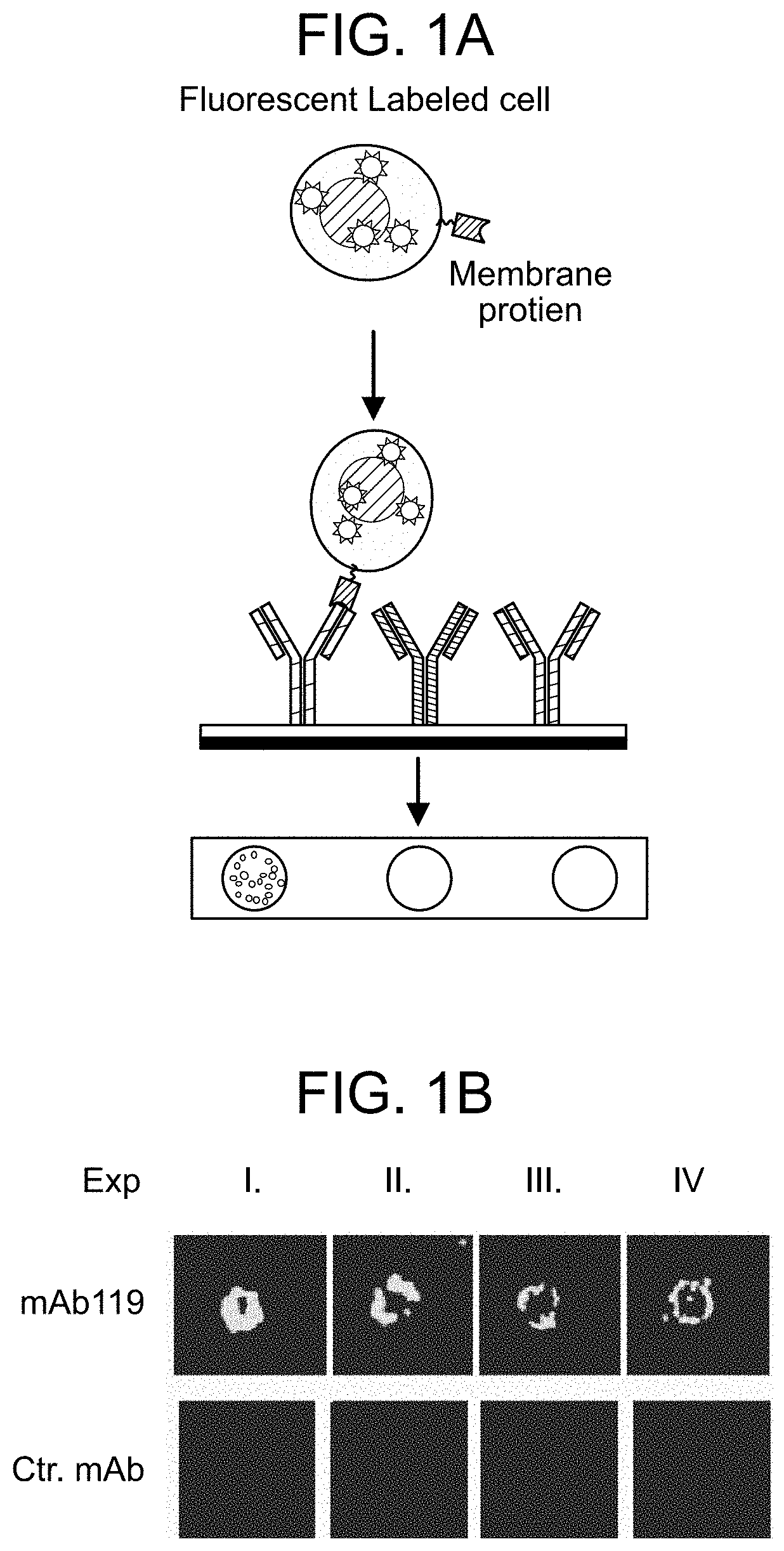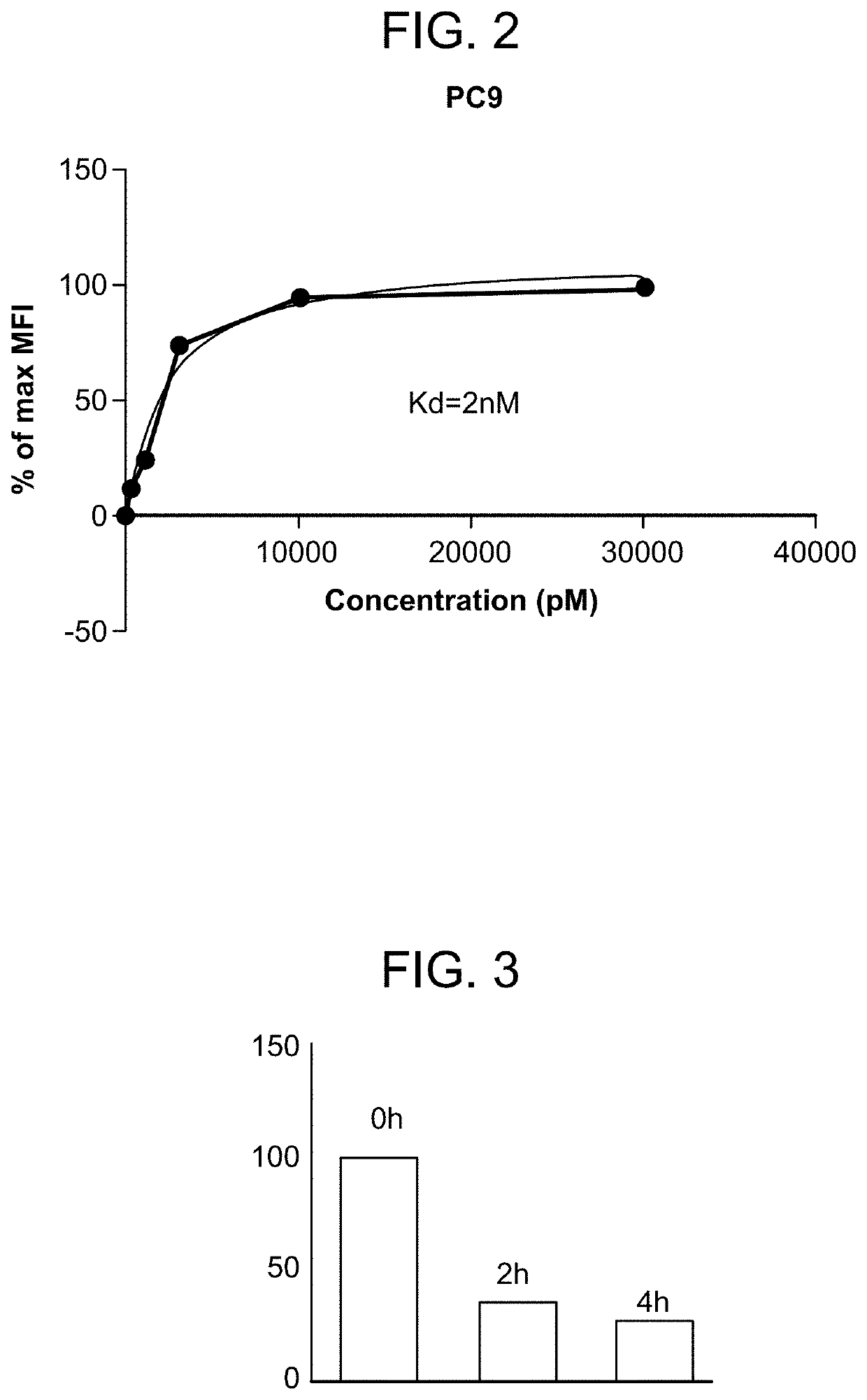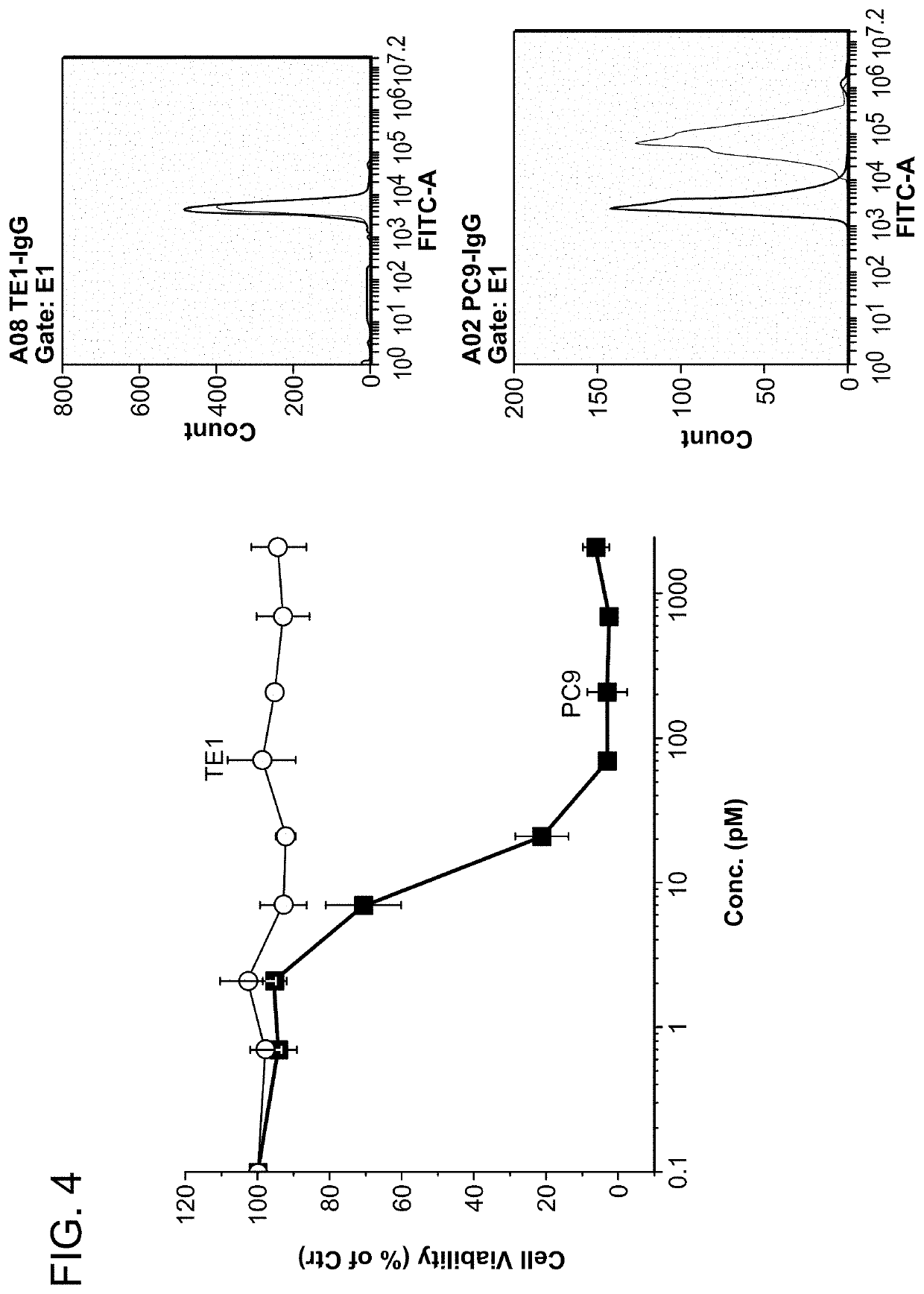Therapeutic antibody and uses thereof
a technology of therapeutic antibodies and antibodies, applied in the field of therapeutic antibodies, can solve the problems of reducing the efficacy of anti-anti-infection in patients, affecting the continued administration, and not always achieving antibodies with sufficient binding affinity
- Summary
- Abstract
- Description
- Claims
- Application Information
AI Technical Summary
Benefits of technology
Problems solved by technology
Method used
Image
Examples
example 1
Live-Cell MabArray Isolation of the Anti-CD44v6 Monoclonal Antibody mAb119, and the Anti-CD44v9 Monoclonal Antibody mAb116
[0343]As shown in FIG. 1A, about 6×104 different monoclonal antibodies (mAbs) were printed onto 4 glass aldehyde chips (75×25 mm) using Arrayjet printer to generate MabArray. The MabArray chips were then blocked with 10% BSA overnight, before the experiments were performed. Live lung cancer cell line PC9 cells were labeled with a green fluorescent nucleic acid stain SYTO14 (ThermoFisher Scientific), and incubated with the chips at a density of 1×107 cells / mL in PBS for 1 hour. MabArray chips were then washed with PBS gently and scanned with Genepix scanner.
[0344]FIG. 1B shows images of mAb119 and control mAb in 4 independent PC9 live cell MabArray experiments. Live PC9 cells were captured by mAb119 on MabArray chips.
example 2
the mAb119 Antigen is Expressed on the Surface of PC9 Cells, and is Internalized by PC9 Cells
[0345]FIG. 2 shows results of FACs analysis of mAb119 on PC9 cells. PC9 FACS titration of mAb119 was performed by incubating PC9 cells with a serial dilution (30000 pM to 0.1 pM, 3 fold serial dilution) of mAb119 for 30 min on ice, before the cells were stained with Alexa488-conjugated anti-mouse IgG (Jackson lab) for 30 min. MFI was analyzed using BD C6. Affinity KD was determined to be about 2 nM.
[0346]FIG. 3 shows that PC9 cells internalized bound mAb119. Live PC cells were cultured on coverslips, and were incubated with 10 m / mL mAb119 for 1 hr on ice, before the cells were washed 3 times with PBS. Cells were then cultured at 37° C. for 0 hr, 2 hr, or 4 hr, before fixation with 4% PFA before detected with FITC conjugated secondary antibody by FACs. PC9 cells were then co-stained by mAb119 (labeled by a green fluorescent dye Alexa488) and anti-LAMP1 (labeled by a red fluorescent dye Alexa5...
example 3
Indirect Cytotoxicity of mAb119 is Antigen Expression-Dependent
[0348]FIG. 4 shows that the indirect cytotoxicity of mAb119 is antigen expression-dependent. PC9 or TE1 cells were cultured in 96-well plate at 2000 cells / well confluence overnight. Cells were treated with serial dilution of mAb119 together with 2 μg / mL MMAE-conjugated goat anti-mouse IgG antibody for 72 hrs. Cell number was then calculated by CCK8 (dojindo). Different cytotoxicity was observed in TE1 and PC9 cells. The antibody cocktail inhibited PC9 growth with an IC50 of 18 pM, while the same antibody cocktail did not inhibit TE1 cell growth. Shown is the representative data derived from TE1 and PC9 cells, expressed as the mean percent growth inhibition±SEM (n=3).
[0349]The expression of mAb119 antigen in the two cell lines were also determined by FACs. The side insert panels show FACs analysis of TE1 (top panel) and PC9 (bottom panel) labeled by mAb119. The results suggest that PC9 cells, but not TE1 cells, express mA...
PUM
| Property | Measurement | Unit |
|---|---|---|
| Molar density | aaaaa | aaaaa |
| Molar density | aaaaa | aaaaa |
Abstract
Description
Claims
Application Information
 Login to View More
Login to View More - R&D
- Intellectual Property
- Life Sciences
- Materials
- Tech Scout
- Unparalleled Data Quality
- Higher Quality Content
- 60% Fewer Hallucinations
Browse by: Latest US Patents, China's latest patents, Technical Efficacy Thesaurus, Application Domain, Technology Topic, Popular Technical Reports.
© 2025 PatSnap. All rights reserved.Legal|Privacy policy|Modern Slavery Act Transparency Statement|Sitemap|About US| Contact US: help@patsnap.com



